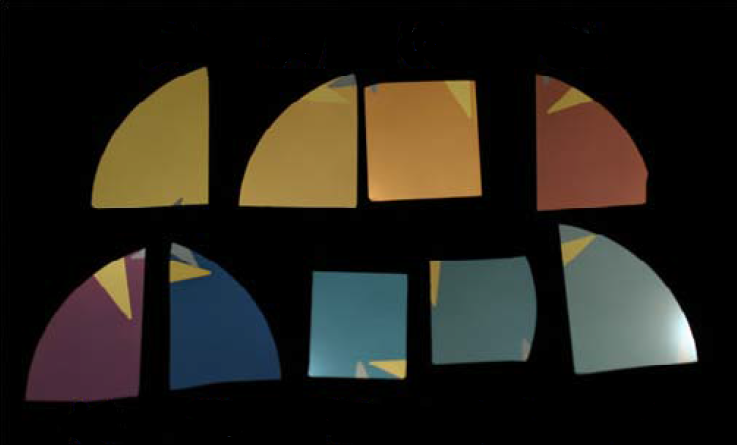
Metals appear colourful by depositing an ultrathin layer of a semiconductor on top. Shown here is the example of thin germanium films on top of gold. Reprinted by permission from Macmillan Publishers Ltd. Nature Materials (2012). doi:10.1038/nmat3443
Ocean waves are pretty relentless when hitting on a beach, and it is not always easy to protect beaches from erosion. For example, if you were to put pillars of a few centimetres in diameter into the water it won’t stop the waves or alter their behaviour. The waves will continue to hit the beach as ever. In optics, the situation is pretty similar. Structures much smaller than the wavelength will have no dramatic effect on a light beam. But as Federico Capasso and his group at Harvard University have shown in a number of papers over the past year, tiny metal structures on the surface of a material can completely alter the way in which light passes through the device. The structures are ultrathin – a few tens of nanometers in height are enough to make exotic types of lenses or to achieve an efficient absorption of the light. Indeed, their approach in designing optical interfaces represents a completely new way of thinking about surfaces, and to me is one of the most exciting developments in photonics this year. […]
Continue reading...

The temporal cloak. A light beam of a single colour is directed at a split-time lens (STL) that converts it into different colours. As the beam then propagates through an optical fibre, the blue light components travel faster than the red ones (the vertical axis shows time), so that eventually a brief gap is formed in the travelling beam during which there is no light present. Therefore, any even taking place during that temporal gap will be concealed from the beam. Afterwards, a reverse process restores the original beam so that an observer does not notice the cloaking device. Reprinted by permission from Macmillan Publishers Ltd. Nature (2012). doi:10.1038/nature10695
Devices that conceal objects from an observer are called cloaks. Conceptually, the idea of cloaking devices has its roots in science fiction, but such devices have indeed been demonstrated in the past few years. These cloaks are based on tiny structures that are able to bend light on predetermined paths as it passes through the structure. This is like a lens, but consisting of manmade materials, and much more versatile and powerful.
A very different type of cloak has now been published in Nature by Alexander Gaeta and colleagues from Cornell University. Following earlier theoretical proposals, they have now demonstrated the first temporal cloak where events are hidden in time, not in space so that an event is concealed from a light beam travelling through the same space for a certain amount of time. To understand the difference of a temporal to a spatial cloak, Robert Boyd and Zhimin Shi from the University of Rochester make a very good comparison in their News and Views article on the paper: […]
Continue reading...

Credit: Yushin Kim, Korea Advanced Institute of Science and Technology
How does a lens work? Well, as the light arrives at the lens it gets bent towards the focal point of the lens. The denser the lens material is in comparison to the surrounding air, the more it is deflected. The materials property that quantifies this effect is the refractive index.
For lenses, the general rule is that a larger refractive index is better. That’s because the maximum resolution of a lens gets better as the refractive index increases. This is of crucial importance for applications where resolution matters, for example in the fabrication of semiconductor transistors, says Xiang Zhang, a physicist from the University of California in Berkeley. “A large index is very useful for high-resolution imaging and lithography. That’s what the billion dollar semiconductor industry critically needs and have investigated in heavily.”Typically, the refractive index varies anywhere between 1 (air) and 3. That of window glass is about 1.5.
Bumki Min from the Korea Advanced Institute of Science and Technology (KAIST) along with colleagues from other institutions now have demonstrated an artificial material whose refractive index is a staggering 38.6. Their paper is published in this week’s issue of Nature.
[…]
Continue reading...





November 8, 2012
Comments Off on The ultimate optical surface devices